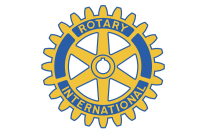The Naturalist's Corner: When not to feed the birds
Last week I wrote about the spiraling cost of birdseed and about experimenting with different seed and protocol for those bird-feeding aficionados who, like me, are on a budget. The idea was to try and find a way to still enjoy birds and not wreck your budget. However, last night I heard a short blurb on WLOS’s 11 p.m. news that reminded me there is a time to stop feeding the birds.
The message was just a couple of sentences stating that dead birds were being reported at feeders across Western North Carolina. If there were details regarding numbers of birds and/or how widespread the phenomenon was, I didn’t catch them. The anchor did note that most of the birds were pine siskins. Pine siskins are small (goldfinch-sized) brown-streaked finches with patches of yellow in the wings. This has been a banner winter for siskins across the Carolinas and much of the Mid-Atlantic and Southeast U.S. When they come, they usually come in hordes. I have heard of people with a hundred or more clamoring for spots at the feeder this year.
Anytime you find dead birds at your feeder the prudent thing to do is discard all seed in the feeders — put it in the trash, don’t just toss it on the ground, the birds will still find it — and then thoroughly clean and disinfect your feeders. A solution of nine parts water and one part bleach is generally recommended. Use a brush and scrub the feeders well. If you are cleaning tube feeders you may want to fill a sink and submerse the feeder. A couple of capfuls of bleach to each gallon of water should suffice. If you are washing wooden feeders and you like the finish you should use a disinfectant other than bleach. You can generally find different brands of disinfectant at specialty stores that cater to birders and/or bird feeders. Or you can use a 5 percent white vinegar to water solution or tea tree oil, about a capful in a gallon of warm soapy water. And if you simply can’t wait to get your feeders back up, use a hair dryer or heat gun to dry them.
Check your birdseed before refilling your feeders. If you see mold or mildew or even if the seed feels damp and/or is clumpy, dispose of it and get fresh seed.
If you’ve done all this and still find dead birds, take your feeders down for a week or so. There may be some type of communicable avian pathogen present and even though your feeders and food are clean and disinfected, simply attracting large numbers of birds to a small area can help spread diseases. This is especially true of gregarious birds like pine siskins. So taking your feeders down and letting the birds disperse will help lessen the impact of any kind of avian sickness.
And as we discussed last week — we feed birds primarily for our benefit. They are perfectly capable of fending for themselves in the wild.
Don Hendershot can be reached at This email address is being protected from spambots. You need JavaScript enabled to view it.





